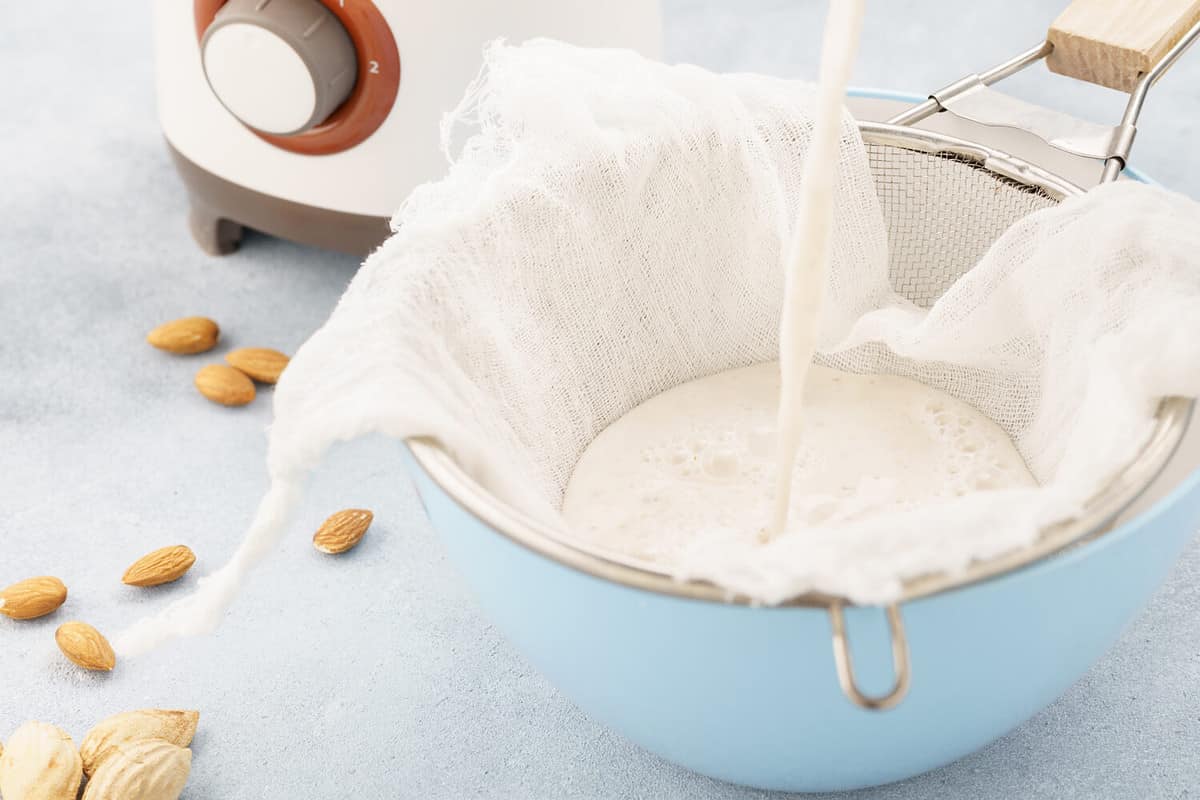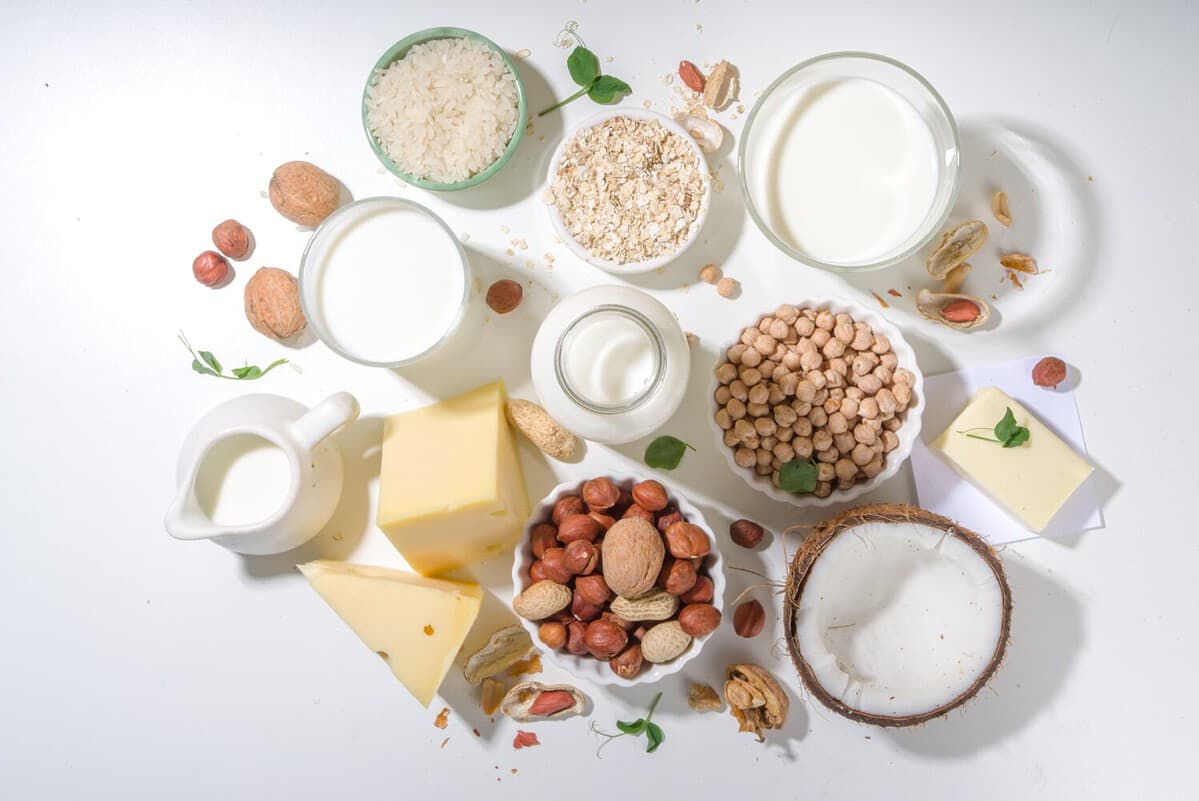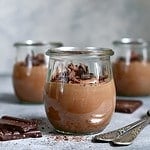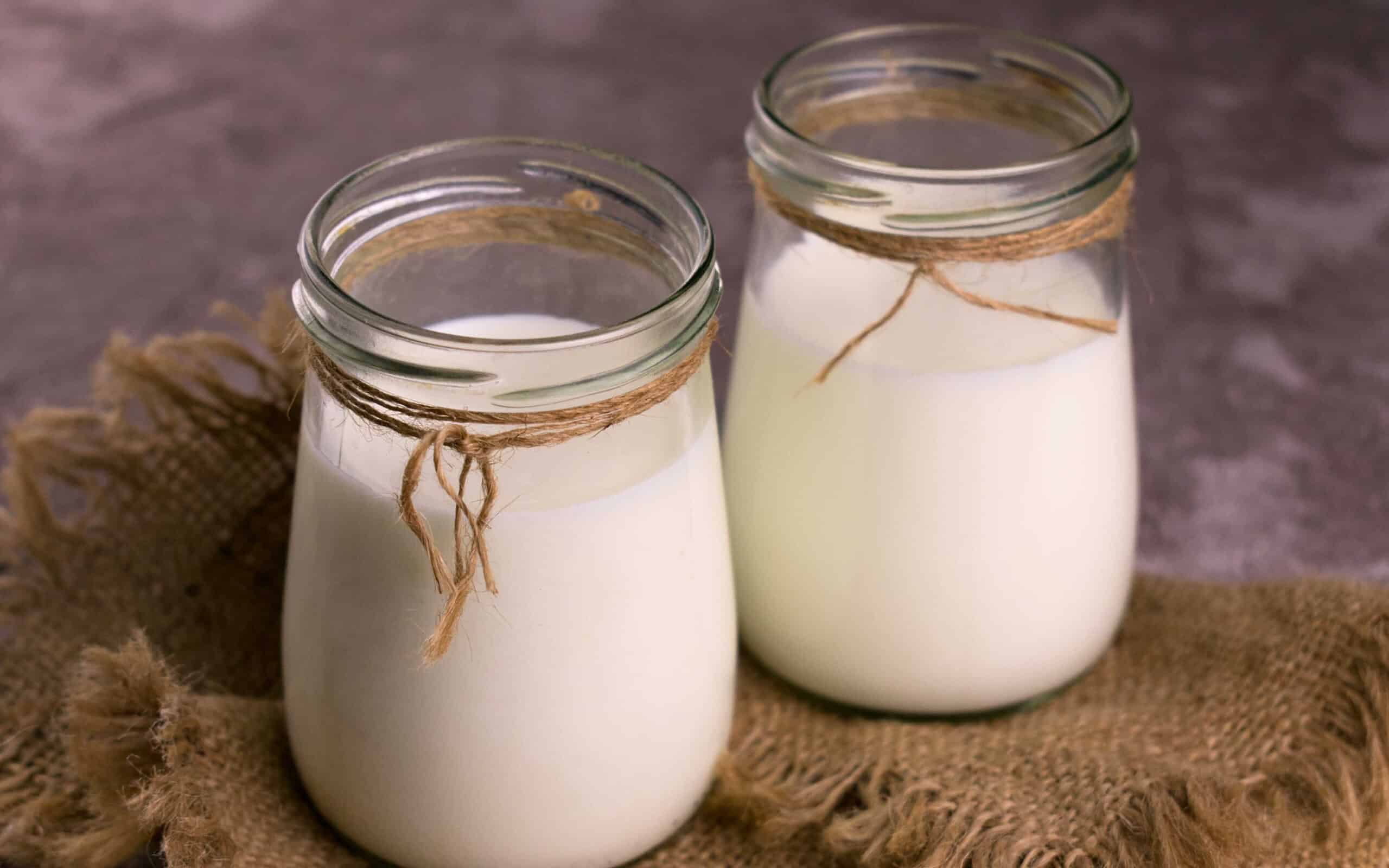Milk has been around for centuries and is derived from mammals' mammary glands, such as cows, sheep, and goats. It is the main source of nutrients for breastfed human babies and young mammals. Milk is high in calcium, vitamins, and minerals and also contains lactose and protein. In the past few years, there has been a debate as to whether milk is healthy. In this article, we will discuss the health benefits of milk, its nutritional profile, fat content, and other milk alternatives, and discover whether milk is healthy or not.

©deryabinka/Shutterstock.com
Is Milk Healthy?
Nutrition experts recommend that, as part of a balanced diet, we should consume milk, yogurt, and cheese daily. Studies found that consuming milk can lower the rates of respiratory infections, asthma, fevers, allergies, ear infections, and even eczema. In addition, drinking milk during childhood has been linked to improving lung function and lowering the risk of allergies in adults.
Some minerals found in milk can influence bone health and blood pressure, but some of their health benefits may be reduced by the high saturated fat content in whole milk. So, it is advised to consult your doctor first should you have any health conditions.
To further add, dairy foods such as yogurt contain health benefits that are vital for the gut microbiome. Consuming any form of milk, high, low, skim, or flavored, in large amounts can contribute to weight gain. Research has not confirmed that consuming whole milk is less beneficial than skim milk in regards to heart disease and diabetes, despite popular speculations that the media has mentioned.
Milk Allergies
Furthermore, in another review, some children and adults may have a cow’s milk allergy, and this can cause serious effects such as diarrhea and stomach cramps. Avoiding cows' milk is the only sensible way to go if you are lactose intolerant. However, this does not rule out accidental intake or the fact that milk is used in other foods. For example, you may have purchased a quiche from the local supermarket, which may have contained milk in the crust or in the main quiche itself. This is why it is vital to read the label and see if the manufacturer has mentioned that there could be the possibility of an allergen product being used. Given the lack of pharmaceutical treatment options, selective desensitization has been viewed as a promising strategy. This strategy can also be used for those who are allergic to peanuts, soybeans, seafood, and eggs.
How Much Milk Should Adults Consume Daily?
The National Institute of Health recommends that adults should drink three cups of milk per day to achieve the daily requirements of vitamin B12, calcium, and animal proteins. Calcium has also been linked to improving your mental health. Milk is also good for your bones and can help reduce fractures and help muscles repair after a gym workout. This is because milk can rehydrate and fuel your body. It contains water, a whole protein, and carbohydrates, and it is an excellent source of electrolytes.
Nutritional Value Of Different Types Of Cow Milk
In this next section, we will discuss five different types of cow milk and the nutritional values one cup holds.
Whole Milk Serving Size: 1 cup
Whole milk: Whole milk is usually pasteurized and basically in the same form as when it comes out of the cow. It contains 3.25% milk fat.
It is rich and creamy, and it is often known as normal milk.
- Calories – 150
- Total Fat – 15.9g
- Saturated Fat – 9.1g
- Cholesterol – 48.8mg
- Sodium – 209.8mg
- Total Carbohydrates – 23.4g
- Dietary Fibre – 0g
- Sugars – 24.6g
- Protein – 15.4g
- Vitamin D – 6.3mcg
- Calcium – 551.4mg
- Iron – 0.15mg
- Potassium – 644.2mg
- Caffeine – 0 mg
- Phosphorus – 409.9mg
2% Milk Serving Size: 1 cup
2% milk: It is thinner than normal milk and contains 2% fat.
- Protein – 9.68g
- Calories – 122
- Total lipid (fat) – 4.85g
- Energy – 137.2 (kcal)
- Fiber – 0g
- Carbohydrate – 13.45g
- Iron – 0.15mg
- Phosphorus – 274.4mg
- Calcium – 350.35mg
- Potassium – 445.9mg
- Sodium – 144.55mg
- Magnesium – 36.75mg
- Zinc – 1mg
- Manganese – 0mg
- Copper – 0.03mg
- Vitamin A – 183.75iu
- Retinol – 39.2mcg
- Selenium – 6.37mcg
- Riboflavin – 0.48mg
- Vitamin C – 2.7mg
- Niacin – 0.25mg
- Vitamin B6 – 0.11mg
- Folate – 12.25mcg
- Pantothenic acid – 0.83mg
- Folic acid – 0g
- Thiamin – 0.11mg
- Folate – 12.25mcg_DFE
- Cholesterol – 19.6mg
- Fatty acids saturated – 3.02g
- Fatty acids monounsaturated – 0.16g
- Fatty acids polyunsaturated – 0.02g
- Vitamin B12 – 0.96mcg
Low-fat Milk Serving Size: 1 Cup
Low-fat milk: It is a thinner milk with only 1% fat and is slightly opaque in color.
- Calories – 106
- Carbohydrates – 13g
- Protein – 8.5g
- Fat – 2.5g
- Saturated Fat – 1.5g
- Omega 3 Fatty Acids – 0.01g
- Calcium – 24%
- Vitamin D – 13%
- Phosphorus – 20 %
Skim Milk Serving Size: 1 Cup
Skim milk: Contains fewer calories than whole milk and less than 0.5% fat. However, it does provide almost the same amount of calcium and protein.
- Carbohydrates – 12mg
- Fat – 0.2g
- Omega 3 Fatty Acids – 0g
- Vitamin D – 14%
- Calories – 84
- Protein – 8.5g
- Saturated Fat – 0.1g
- Calcium – 25%
- Phosphorus – 21%
Organic Milk Serving Size: 1 Cup
Organic milk: The cows’ diet must include at least 30% pasture; they are bred on farms that utilize organic pesticides and fertilizers. The cows are also not given any supplements, hormones, or antibiotics. Research shows that organic milk contains slightly more amounts of polyunsaturated fatty acids, vitamin E, omega 6, iron, and omega 3. All of these nutrients are beneficial for healthy bones, brain function, and eyesight.
- Calories – 161
- Carbohydrates – 11g
- Protein – 9g
- Fats – 11g
- Saturated Fats – 6g
- Cholesterol – 36mg
- Calcium – 290mg
- Potassium – 367mg
- Sodium – 120mg

©Rimma Bondarenko/Shutterstock.com
Plant-Based Milk Alternatives
Plant-based milk, previously known as “milk-like plant juices,” has been utilized since the 13th century. My friend, who is lactose intolerant, introduced me to almond milk which I found to be quite tasty. The color of plant milk is similar to that of milk and is often consumed as a dairy milk alternative suitable for those who are vegan and lactose intolerant. These types of milk are created using the extract from water-based plants, and they have a delightful flavor and smell.
Additionally, there are approximately 17 different kinds of plant milk. However, the most popular sellers in most supermarkets are soy, oat, pea, almond, and coconut. These milk-based alternatives are also filled with vitamin B12, protein, vitamin D, and calcium, so you can still obtain your daily milk needs. Furthermore, plant-based milk alternatives can be added to baked goods like cakes and cookies and can be used in smoothies, coffee, and tea.
In our last section, we will discuss two of the most popular plant-based milk alternatives that you can easily make at home. Consuming plant-based milk can provide relief for those who have allergens in cow’s milk. Let’s check it out.
Soy Milk
For those who are lactose-intolerant, soy milk is a popular choice. First, to make soy milk, the beans are soaked in water and then strained, leaving a smooth, milky liquid behind. There are two types of soy milk sweetened, which usually contain oil, vanilla, salt, and cane sugar. Unsweetened commonly contains soybeans, salt, minerals, and purified water. Some versions contain a stabilizer like gellan gum to create a thicker texture.
1 cup of soy milk contains:
- Protein – 7g
- Calories – 80
- Carbohydrates – 4g
- Fat – 4g
- Protein – 6.95g
- Saturated Fat – 0.5g
- Fibre – 1.2g
- Sugars – 1g
- Calcium – 301mg
- Potassium – 292mg
- Sodium – 90mg
- Vitamin B12 – 2.70mcg
- Vitamin A – 503iu
- Vitamin D – 119iu
- Cholesterol – 0mg
Oat Milk
Oat milk has not been around for as long as other plant-based milks. Rickard Öste, a Swedish scientist, created oat milk in the 1990’s. This tasty plant milk has a mild flavor similar to oats and a delightful creamy texture. It originated from whole oat grains known as Avene sativa using water to remove the plant material. It can be produced unsweetened, sweetened, chocolate, or vanilla. Furthermore, around 2020, oat milk products became available in yogurt, chocolate, ice cream, and coffee creamer.
1 cup of unsweetened oak milk contains:
- Carbohydrates – 16g
- Calories: 120
- Protein – 3g
- Dietary fiber: – 2g
- Fat – 5g
- Riboflavin – 45%
- Vitamin A – 20%
- Calcium – 25%
- Iron – 2%
- Vitamin B12 – 50%
- Potassium – 8%
- Vitamin D – 20%
- Phosphorus – 20%
Final Thoughts
Finally, milk can have many potential health benefits and should be consumed along with a balanced diet. Daily consumption of milk may reduce the risk of heart disease, fever, eczema, and more. While milk may be high in calories, it can also be good for supporting your weight as part of a balanced diet. Furthermore, those who are lactose intolerant should avoid milk and opt for other milk alternatives like soy or almond. Plant-based milk is environmentally friendly, reducing water usage and greenhouse gas releases. They also contain many vitamins and minerals that can benefit the body. If you want to save some money, you could always attempt to make your own. Take the time to enjoy your next glass of milk!

Creamy Milk Chocolate Pudding
- Total Time: 15 minutes
Ingredients
- 1/2 cup granulated sugar
- 1/4 cup unsweetened cocoa powder
- 1/4 cup cornstarch
- 1/8 teaspoon salt
- 2 1/2 cups whole milk
- 4 oz milk chocolate, finely chopped
- 1 teaspoon vanilla extract
- Whipped cream and chocolate shavings for garnish (optional)
Instructions
- In a medium-sized saucepan, whisk together sugar, cocoa powder, cornstarch, and salt.
- Gradually whisk in the whole milk to the dry ingredients, ensuring there are no lumps.
- Place the saucepan over medium heat and cook, stirring constantly, until the mixture thickens and comes to a gentle boil.
- Remove the saucepan from heat and add the finely chopped milk chocolate and vanilla extract. Stir until the chocolate is completely melted and the pudding is smooth.
- Pour the pudding into individual serving dishes or a large bowl. Cover with plastic wrap, ensuring the wrap is in direct contact with the surface of the pudding to prevent skin from forming.
- Refrigerate for at least 2 hours or until the pudding is fully chilled and set.
- Before serving, garnish with whipped cream and chocolate shavings if desired.
Nutrition
- Calories: 320
- Sugar: 30 g
- Sodium: 90 mg
- Fat: 16 g
- Carbohydrates: 40 g
- Fiber: 2 g
- Protein: 6 g
- Cholesterol: 25 mg
The image featured at the top of this post is ©/ via Getty Images.

